Tteok Mandu Guk (Korean Rice Cake Soup with Dumplings) is one of the classic Tteokguk enjoyed by many Koreans on New Year’s Day. Beef broth and seasoned beef toppings make this an irresistible comforting version of the Korean New Year’s day soup.
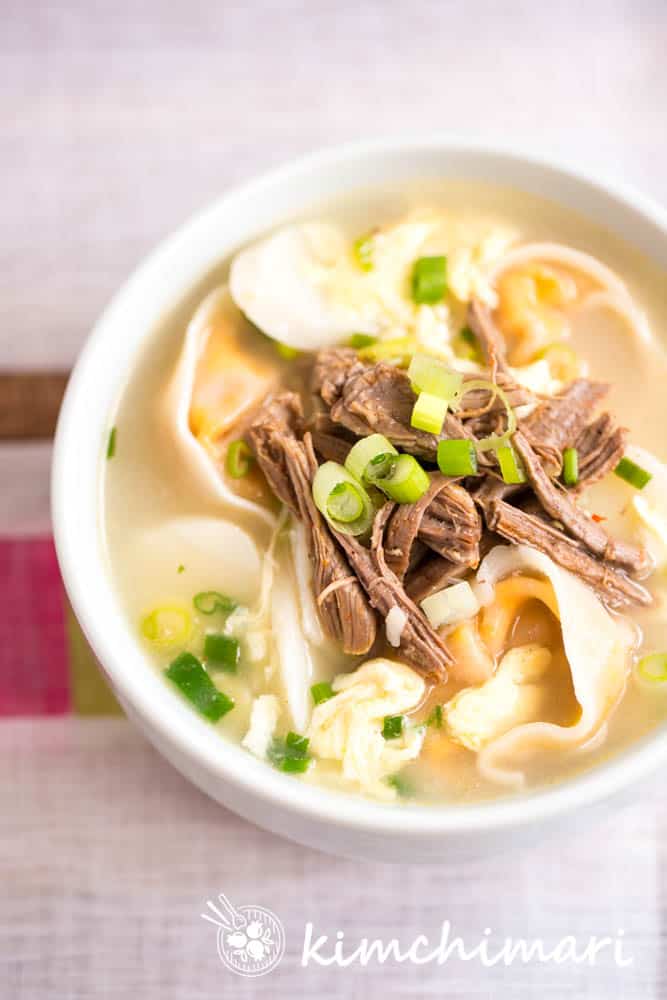
This Tteok Mandu Guk (Korean Rice Cake Soup with Dumplings) is what my mom and grandma always made for us and also treated our guests on New Year’s day.
Tteokguk is something that all Koreans eat, but based on which province you live in, the recipes are different. Since my parents are originally from North Korea (moved down south during the Korean war), I grew up eating this northern Korean style with beef and Kimchi dumplings (만두 mandoo) all the time.
The other popular Seoul style Tteokguk is made with Anchovy stock and is topped with beef and egg jidan.
We always added rice to the tteokguk, cut up the dumplings and mixed it all together, and ate it with some wonderful homemade kimchi which was fermented in the ground all winter…simply heavenly..
Then I got married, and my husband, having been raised on the southern Korean/Seoul style of tteokguk, asked for a different kind with no dumplings and more elaborate garnishes like the one shown in my first anchovy stock based Tteokguk recipe post. And he thought I was crazy when I wanted rice with my Tteok Mandu Guk. He said, tteok is made from rice already! Why are you adding more rice to it??
And my answer was.. well but the texture is different? It took me about 15 years to give up making rice whenever I made Tteokguk..lol.
In this post, I will share how to make Tteok Mandu Guk with beef broth. Btw, I also have a separate recipe post for beef soup. This beef stock recipe is a great foundation for many other Korean dishes such as Yukaejang and Wugeoji Guk- so pay close attention!
You would think that making beef stock is probably all the same but I learned some great tips from my mother-in-law (and she makes the best beef soup I have ever tasted) which I am now passing on to you.
Should I soak frozen rice cakes (tteok) in water or not?
People can never seem to agree whether it’s better to soak frozen tteokguk tteok in water before adding to soup to make Tteokguk or Tteok Mandu Guk. My usual advice is to soak the frozen rice cakes in water (not too long) for a few minutes then drain them and then add to soup.
BUT, I found that some frozen tteoks (especially if they have been frozen/defrosted and then frozen again a couple of times) will kind of disintegrate in the soup if you soak them in water first. But then, some other frozen tteoks will not cook easily and stay hard if you don’t soak in water first…
What to do??
I am sorry to say, in my experience so far, I have not been able to come up with a consistent answer. What I do know is that – if the tteok had been frozen, defrosted, frozen again and again (you can tell this by seeing the tteok closely and you will see that there are tiny cracks in them) and most likely it will kind of become mushy no matter what you do. In this case, it’s usually better not to soak in water.
So the best is to buy fresh tteok and freeze the rest for later. The next best thing is to buy tteok that comes refrigerated and vacuum-packed. Use it and freeze the rest. Finally, buy frozen ones only if you have no other choice.
If you have time, make your own Kimchi Mandu (picture above) using my recipe ahead of time, freeze it and than add this mandu to the soup. Here’s a quick video on how I make my Kimchi dumplings.
Instant Pot Tteokguk
I also have an Instant Pot Rice Cake Soup recipe – if you want a simpler and quick one using beef stew meat instead of making a separate beef broth.
OK, well, let’s get started!!
BEEF Tteok Mandu Guk RECIPE
| Servings: 4 | Cook Time: 5 min | Difficulty: Easy |
Ingredients
- 1 lb Korean sliced rice cakes (Tteokguk Tteok) – use less if adding dumplings
- 6 – 8 frozen Korean dumplings (I like to use Kimchi Mandu)
Beef Stock
- 1 lb beef brisket
- 1 medium onion
- 2 green onions (for soup, optional)
- 9 C cold water
- 1/2 tsp Guk Ganjang (Soup Soy Sauce)
- 1/2 tsp sea salt
Seasoning for the beef garnish
- 1/2 tsp Guk Ganjang
- 1 tsp Jin Ganjang (regular soy sauce)
- 4 T chopped green onion
- 2 tsp chopped garlic
- 1 – 2 tsp sesame oil
- 1/2 tsp sugar
- 1/8 tsp red chili pepper powder
- 1/8 tsp black pepper
Finishing Toppings
- 2 eggs slightly whipped
- 1 sheet of dried sea laver (Gim 김) cut into strips
- 1 green onions, chopped
- black pepper
Step-by-Step Directions
0. If using frozen tteok, soak in cold water for couple minutes just until they fall apart. You can skip this step if you find that your frozen tteok brand becomes too mushy too quickly. Drain the rice cake slices when they have separated.
1. Peel the onion and use it whole. Wash and clean the green onions. Soak the beef in cold water for about 30 min to let it bleed out. If you don’t have time to soak the beef, you can skip this step. No big deal..I skip this step all the time.. 🙂 but don’t tell that to my mother-in-law.. 😉
2. Add water, beef and onion to pot and bring it to boil over medium high heat (uncovered).Once it starts to boil, lower the heat, cover with a lid and let it simmer for 1 hour. The soup boils over easily so keep a close eye and reduce the heat quickly when it starts to boil over. Skim off any foam that forms on top to keep the soup clear.
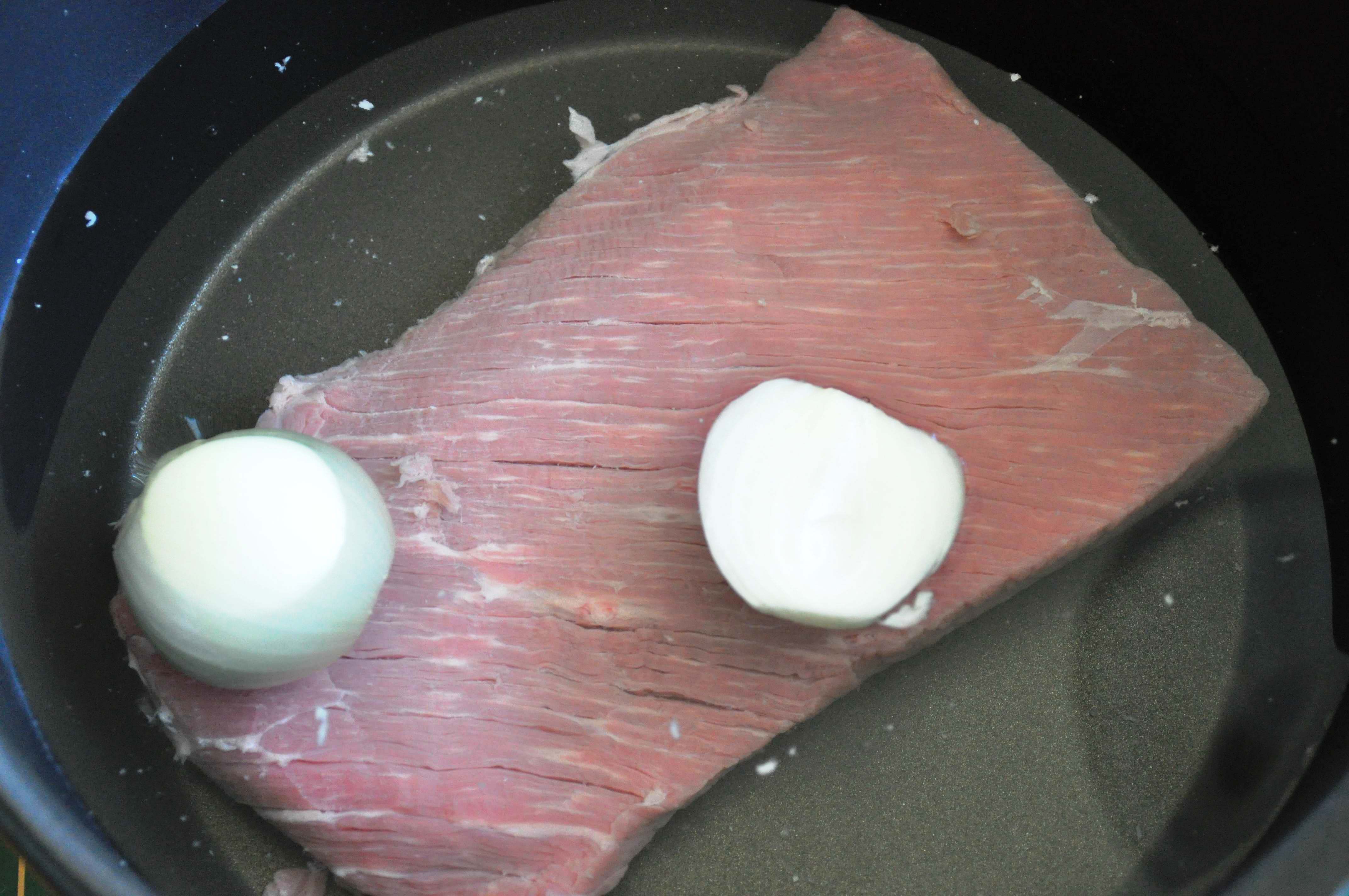
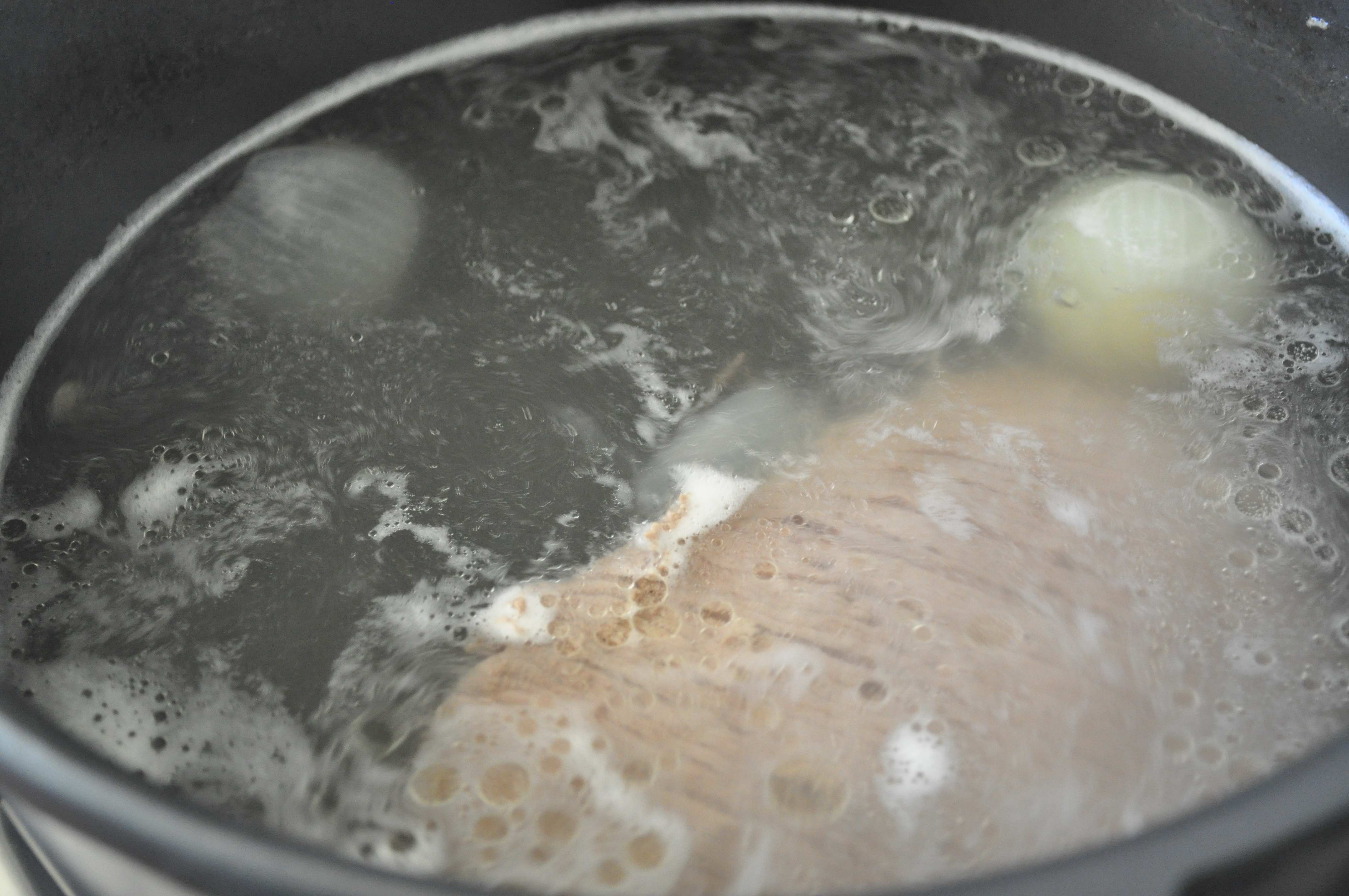
This is a very basic recipe for making Korean beef stock. It is used as a base for many Korean soups such as yukaejang or wugeoji guk. You can also eat this soup just by itself with some rice and kimchi and that’s a real simple comfort food to have in your repertoire.
3. Test the doneness of the beef by piercing it with a fork. If the fork goes in easily then it is done. If there is resistance, cook it a little longer.Take out the brisket, put it on a cutting board and let it cool. Cut it into 1 1/2 inch to 2 inch wide pieces against the grain – as shown on the left side of the picture below. Then tear them into smaller pieces by following the grain – shown on the right side of the picture below.
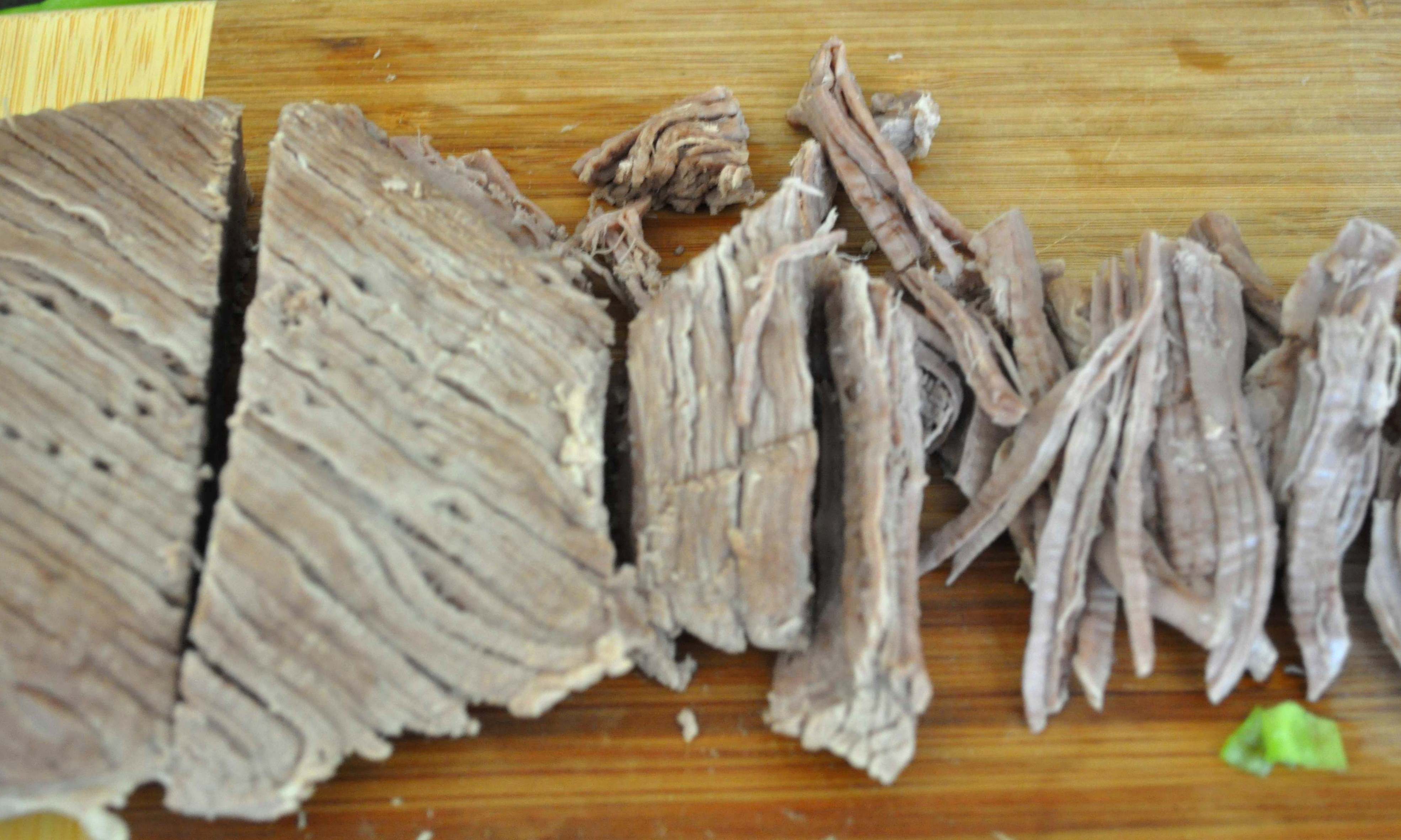
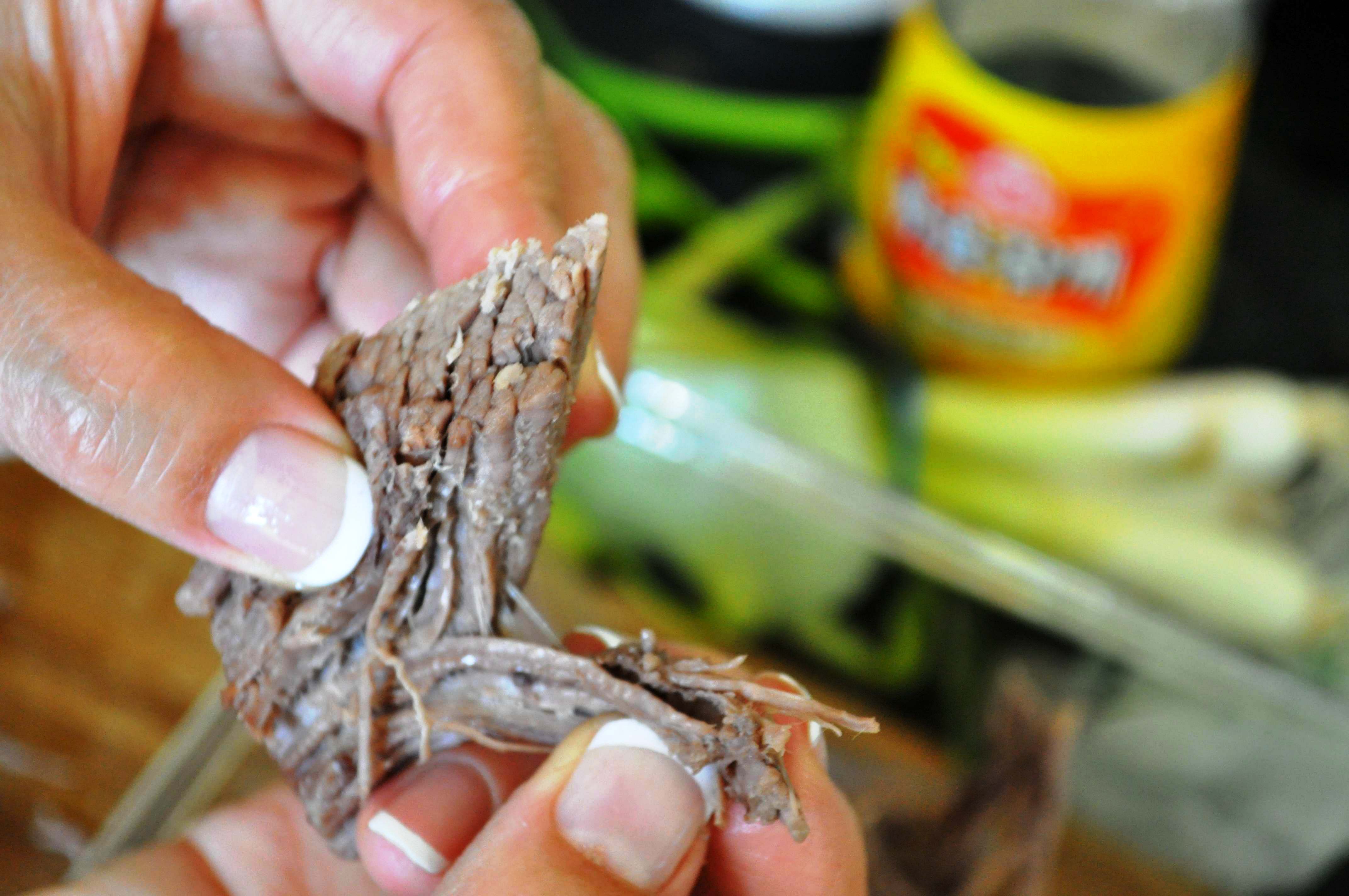
4. Season the torn beef pieces with seasoning for beef garnish (soy sauce, red chili pepper, garlic, green onion etc). Massage beef well with your hand to make sure they are all well seasoned. This is a good time to use the handy dandy plastic glove.
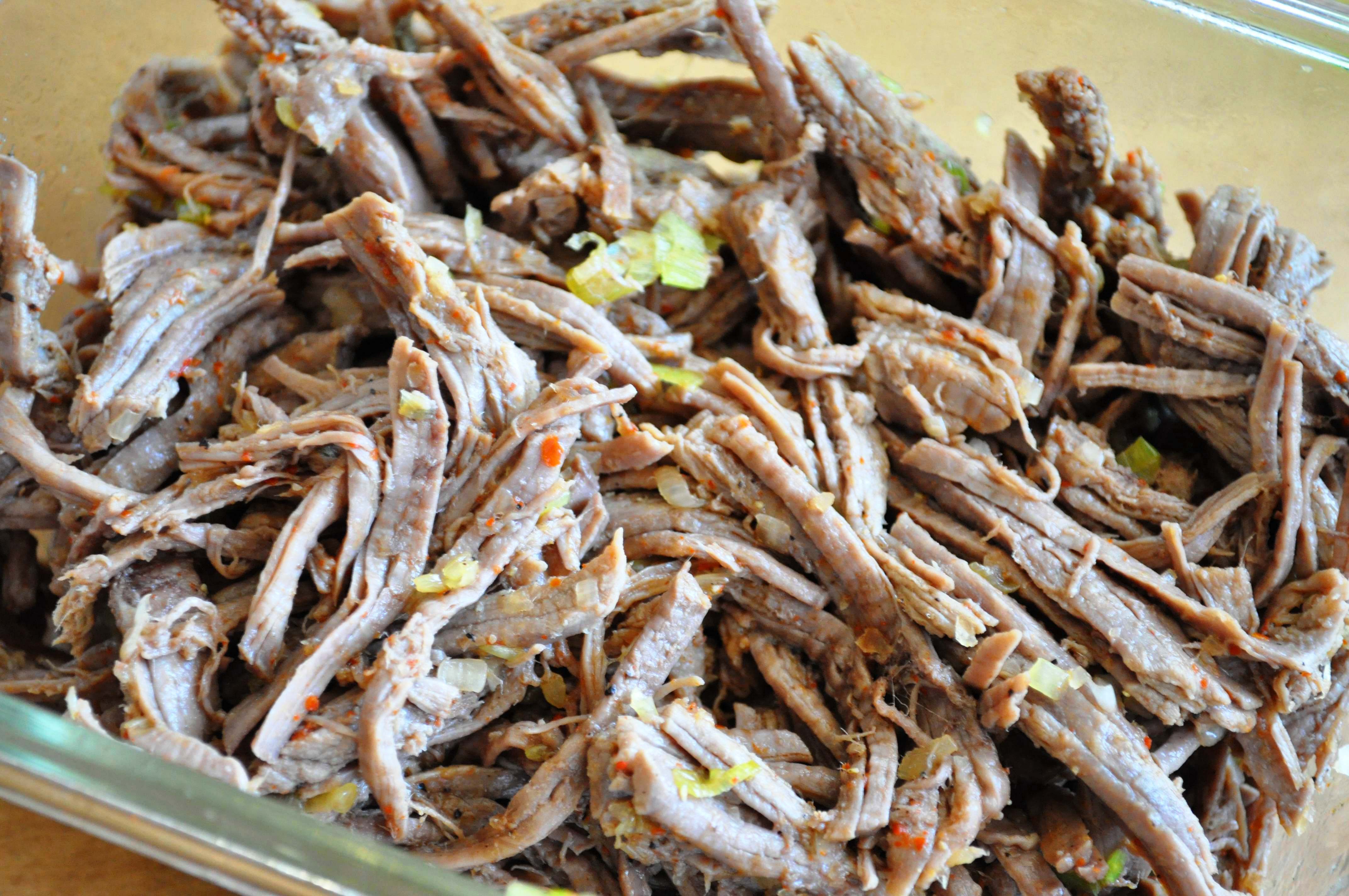
5. Whip 2 eggs in a small bowl, add a pinch of salt and mix it lightly. Set aside.
6. Discard the onion from the soup. Season the beef broth – add Guk Ganjang and Salt.
7. Bring beef broth to a boil on medium heat. Now you are ready to make the Tteokguk!
8. Add rice cakes to boiling broth.
9. Add drained rice cakes to the boiling soup. Cover pot and bring back to boil again. For Tteokmandu Guk, also add frozen mandu (dumplings) straight into the pot at this point. Continue to simmer for few more minutes.
10. When the rice cakes and the mandu float to the top, they are fully cooked. Swirl in the whipped egg by pouring and circling it around the pot. This is so the egg is distributed evenly throughout soup. It should look like you made egg drop soup. Add sliced or chopped green onions. Turn off the heat.
11. Serve in a bowl, topped with the seasoned beef garnish, chopped green onions, thin slivers of gim (both roasted and unroasted laver works) and a dash of black pepper!! YUM!!
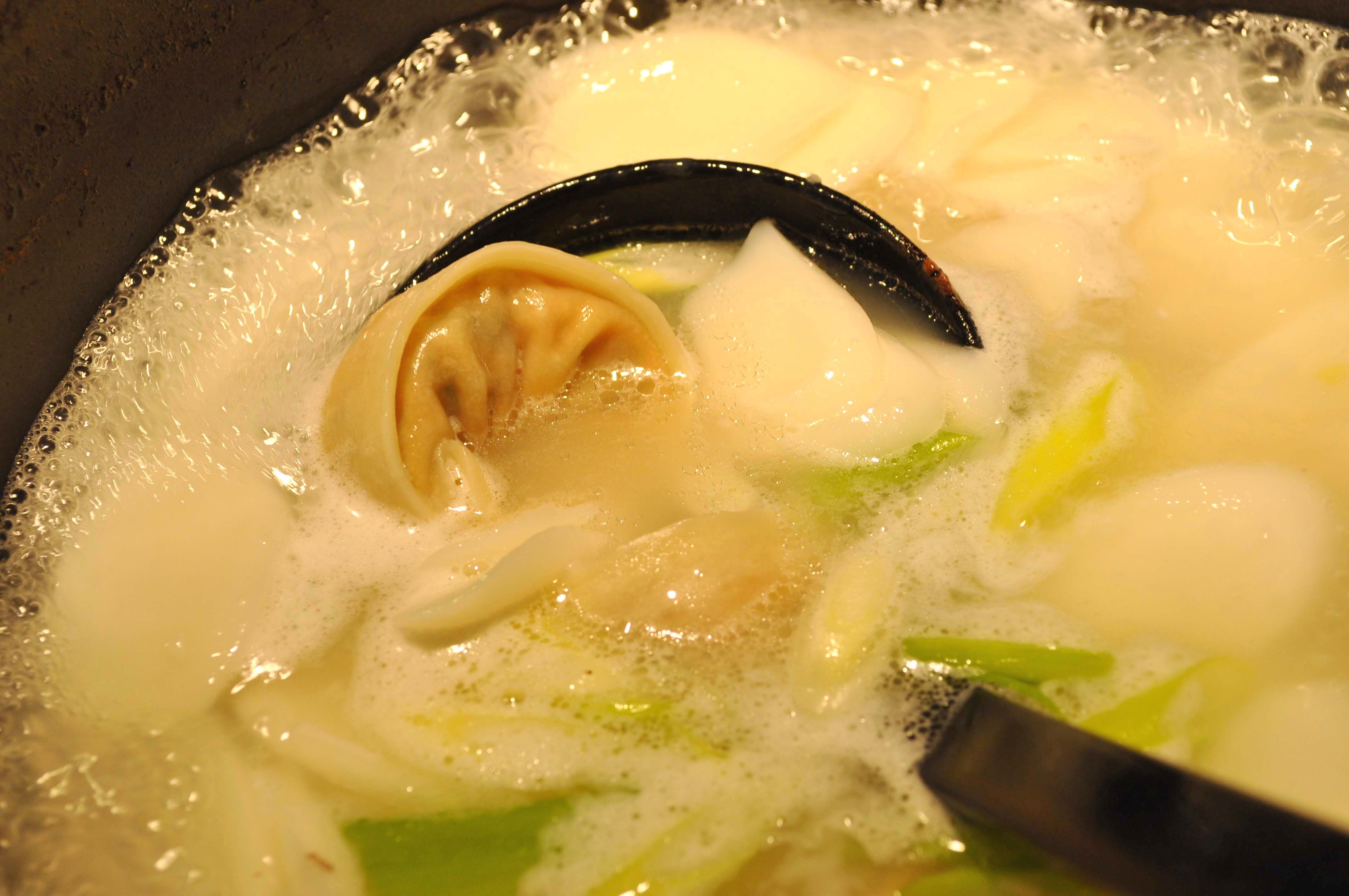
And there you go! Here is Tteok Mandu Guk made with beef broth. Sooo yummy and comforting!!! 💕💕
And using the same recipe but just omitting the mandu, you get also equally delicious Tteok Guk with Beef Broth!
Serving Suggestions and Storage
- Tteok Mandu Guk is best enjoyed with definitely some kimchi and then will go with any great side dishes like Jeon or Japchae. Because this is beef broth based, I wouldn’t serve with rich dishes like Galbijjim. You can find more menu ideas from my New Year Foods from Soups to Desserts post.
- Tteokguk is one of those soups that doesn’t keep well if you have leftovers. Because the soup will become almost like paste and the tteok will be totally mushy. So it’s best not to have leftovers. You can also make a big batch of the broth and meat toppings and then just cook the soup with just the needed amount of tteok per meal.
- If you have leftovers, separate the tteok from the broth as soon as you can and refrigerate. Put it together when you reheat and you may probably need a little more broth or water to dilute the thick soup.
TIP FROM JINJOO!
Chef’s Tips
- If the stock has reduced too much (let’s say you forgot and left it simmering for too long or forgot to reduce the heat), you can always add more water to increase the liquid amount. When adding additional water to any kind of meat stock, add boiling hot water. Never add cold water to soup that’s still cooking as this really diminishes the taste.
- You can use canned chicken broth for the soup. I have not had much luck with beef broth though; it just doesn’t taste right.
- Starting with beef in cold water makes a more richer-tasting soup. If you put the meat in already boiling water, the meat flavor will stay more within the meat and not into the soup.
Hope you enjoy my Tteok mandu guk- northern style!
Tteok Mandu Guk (Korean Rice Cake Soup with Dumplings)
Ingredients
- 1 lb Tteokguk Tteok (Korean sliced rice cakes)
- 8 each frozen Korean dumplings (mandu) I recommend Kimchi Dumplings – optional
Beef Broth
- 1 lb beef brisket
- 1 medium onion
- 2 green onions (optional)
- 9 cups cold water
seasoning for broth
- 1/2 tsp Guk Ganjang (Soup soy sauce)
- 1/2 tsp sea salt
Seasoning for beef garnish
- 1/2 tsp Guk ganjang (Soup Soy Sauce)
- 1 tsp Jin Ganjang (regular soy sauce)
- 4 Tbsp green onion (chopped)
- 2 tsp garlic (chopped)
- 1-2 tsp sesame oil
- 1/2 tsp sugar
- 1/8 tsp red chili pepper powder
- 1/8 tsp black pepper
Garnish
- 2 eggs (slightly whipped)
- 1/3 sheet dried sea laver (cut into strips)
- 1 each green onions chopped
- black pepper
Instructions
- If using frozen tteok, soak in cold water for couple minutes just until they fall apart. You can skip this step if you find that your frozen tteok brand becomes too mushy too quickly. Drain the rice cake slices when they have separated.
- Peel the onion and use it whole. Wash and clean the green onions. Soak the beef in cold water for about 30 mins to let it bleed out. If you don’t have time to soak the beef, you can skip this step.
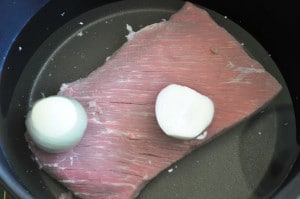
- Add the water, beef, and onion to a pot and bring it to a boil over medium high heat, uncovered. Once it starts to boil, lower the heat, cover with a lid and let it simmer for 1 hour. The soup boils over easily so keep a close eye and reduce the heat quickly when it starts to boil over. Skim off any foam that forms on top to keep the soup clear.
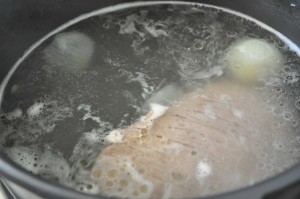
- Test the doneness of the beef by piercing it with a fork. If the fork goes in easily then it is done. If there is resistance, cook it a little longer. Take out the brisket, put it on a cutting board and let it cool. Cut it into 1 1/2 inch to 2 inch wide pieces against the grain. Then tear them into smaller pieces by following the grain.
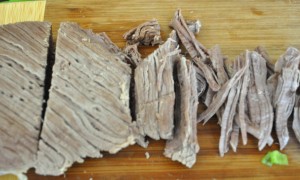
- Season the torn beef pieces with the garnish seasoning (soy sauce, red chili pepper, garlic, green onion, etc). Massage the beef well with your hands to make sure the pieces are all well seasoned.
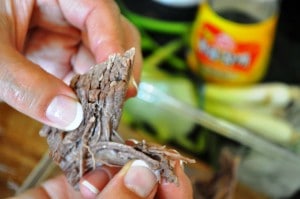
- Add 2 eggs to a small bowl, add a pinch of salt, and whisk it lightly. Set aside.
- Discard the onions from the soup. Season the beef broth – add Guk Ganjang and Salt.
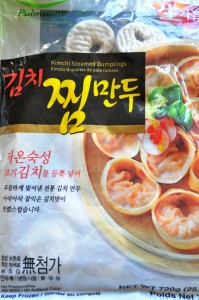
- When the dduk and dumplings are cooked they will all rise to the top. You can then add the egg mixture to the soup by pouring and circling it around the pot. This is so the egg is distributed evenly throughout soup. It should look like you made egg drop soup. Top the soup with the beef garnish made earlier and also some dried sea laver strips.
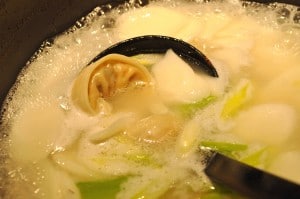
- Bring beef broth to a boil on medium heat. Now you are ready to make the Tteokguk!
- Add rice cakes to boiling broth.
- Add drained rice cakes to the boiling soup. Cover pot and bring back to boil again. For Tteokmandu Guk, also add frozen mandu (dumplings) straight into the pot at this point. Continue to simmer for about 5 minutes or so. If you like your tteok to be on the chewy side, you shouldn't cook longer than 5 min. Cook longer if you prefer your tteok to be soft.
- When the rice cakes and the mandu float to the top, they are fully cooked. Swirl in the whipped egg by pouring and circling it around the pot. This is so the egg is distributed evenly throughout soup. It should look like you made egg drop soup. Add sliced or chopped green onions. Turn off heat.
- Serve in a bowl, topped with the seasoned beef garnish, chopped green onions, thin strips of gim (both roasted and unroasted laver works) and a dash of black pepper!! YUM!!
Tips & Notes:
- If the stock has reduced too much (let’s say you forgot and left it simmering for too long or forgot to reduce the heat), you can always add more water to increase the liquid amount. When adding additional water to any kind of meat stock, add boiling hot water. Never add cold water to soup that’s still cooking as this really diminishes the taste.
- You can use canned chicken broth for the soup. I have not had much luck with beef broth though; it just doesn’t taste right.
- Starting with beef in cold water makes a more richer tasting soup. If you put the meat in already boiling water, the meat flavor will stay more within the meat and not into the soup.
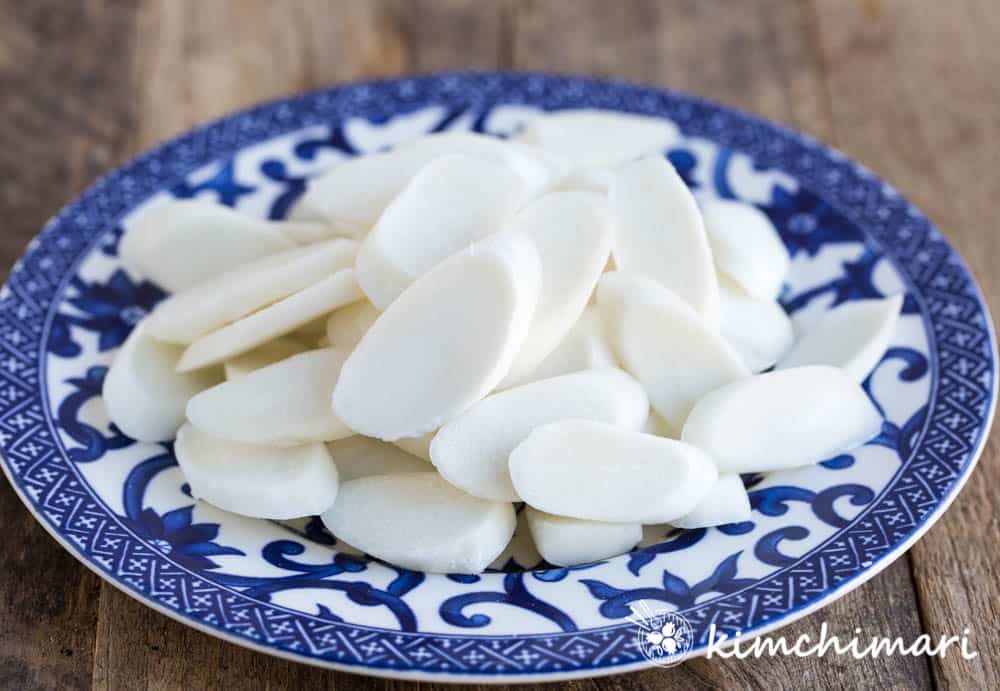
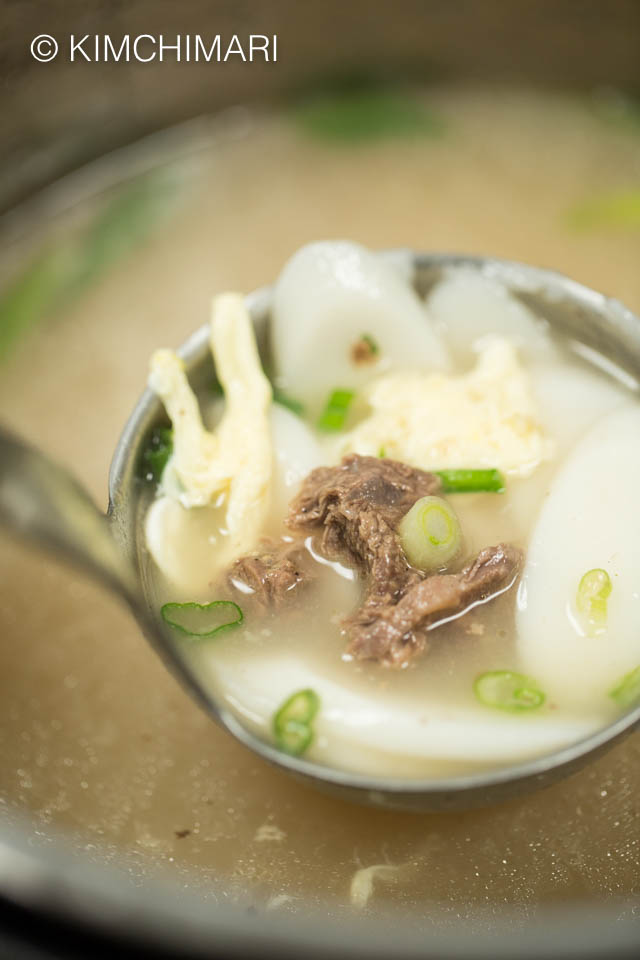
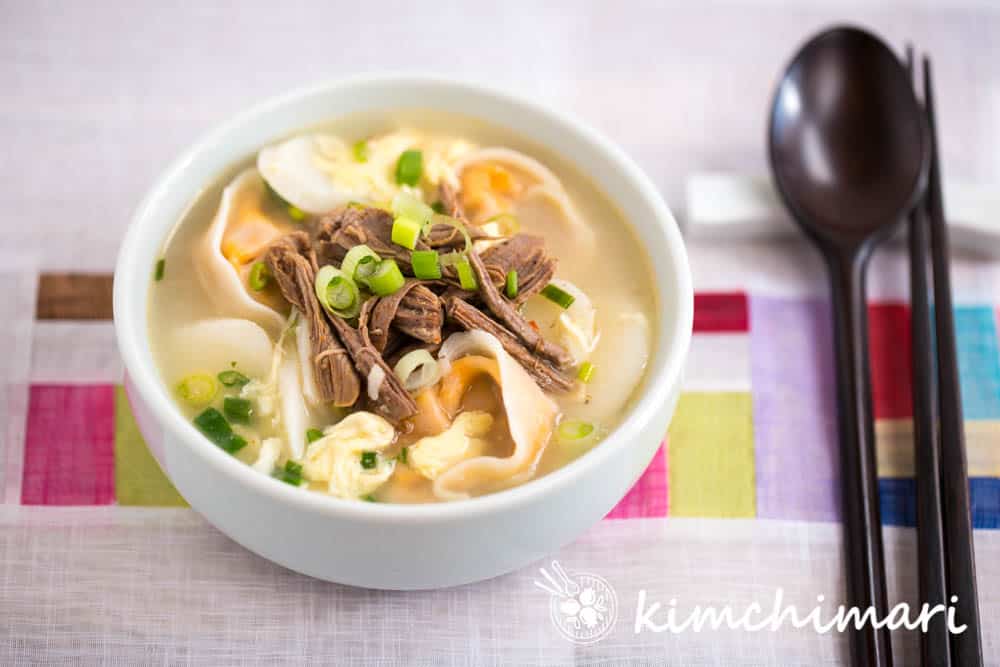
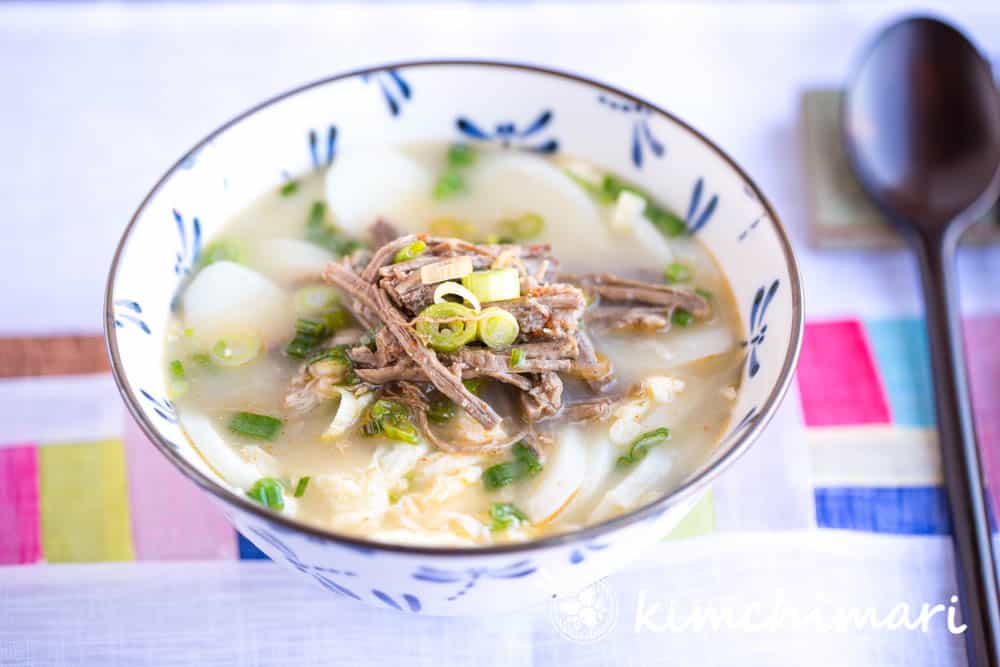
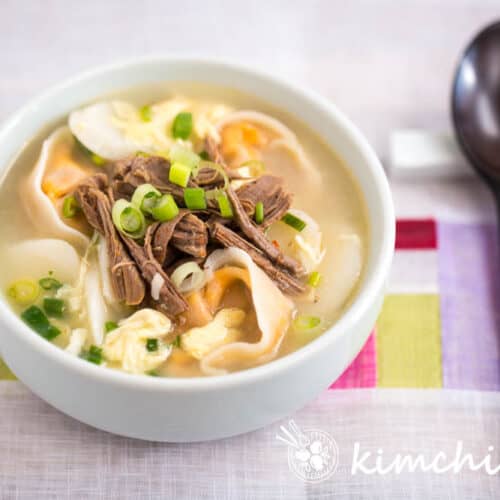
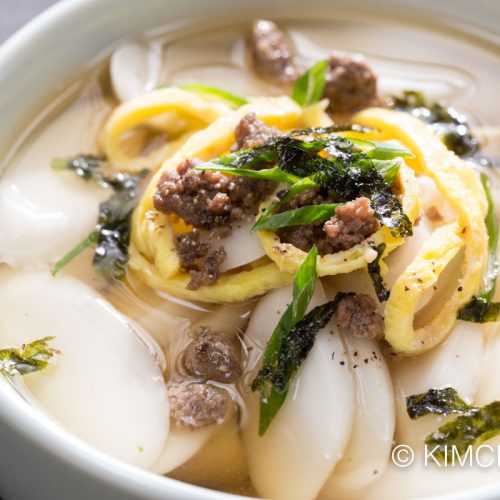
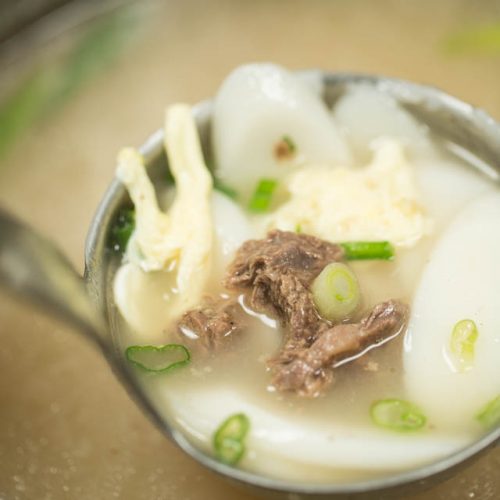

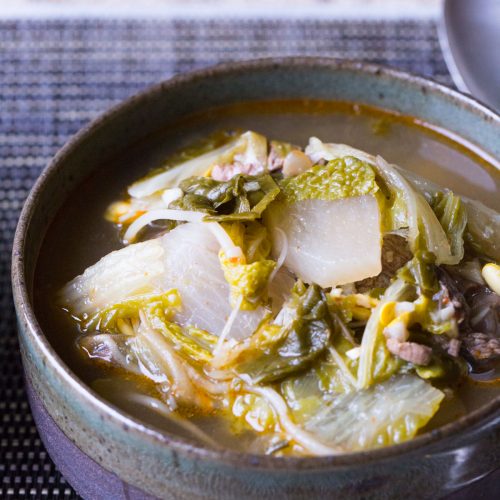
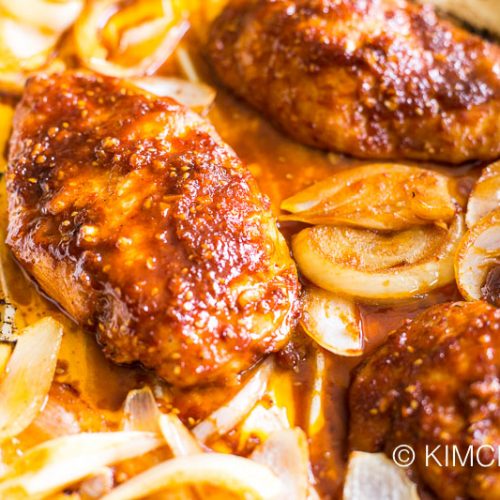
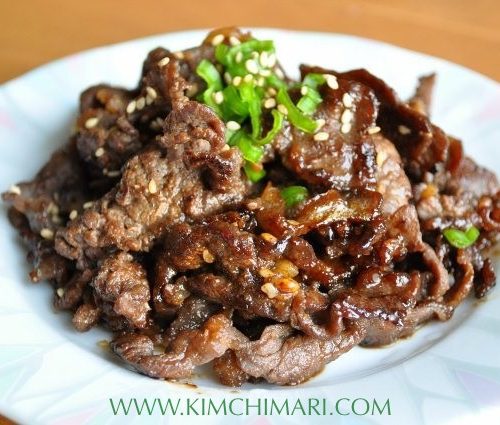
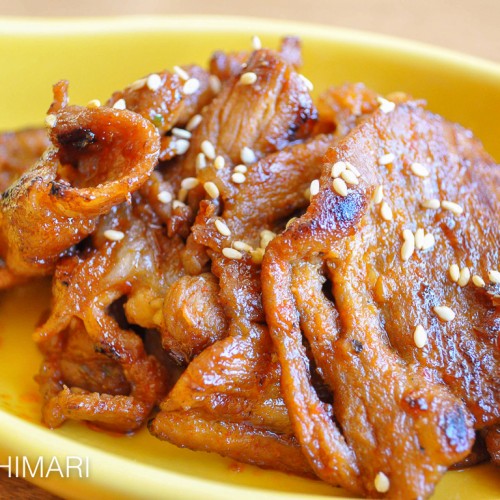
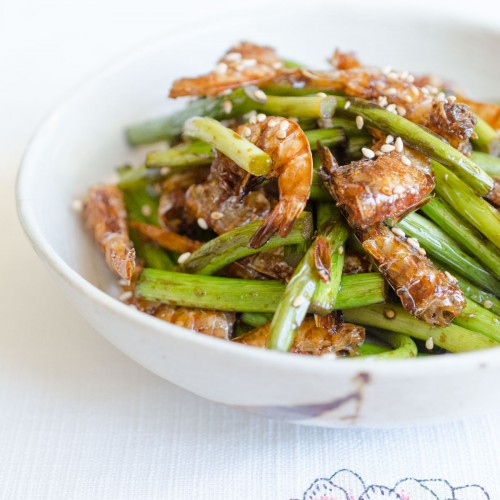
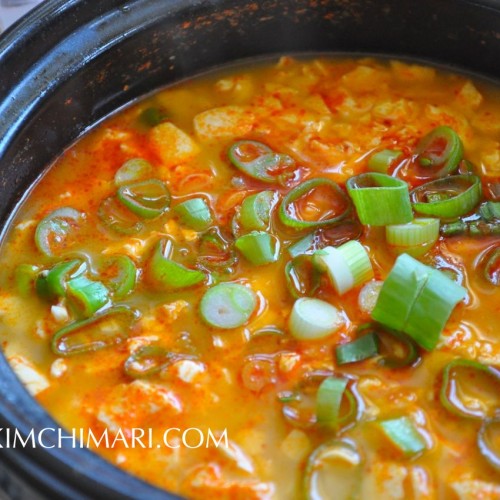
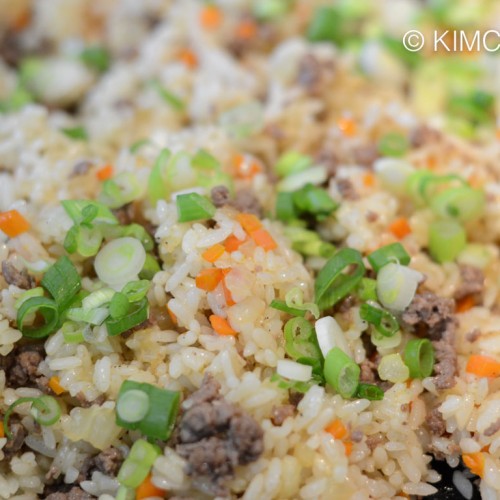
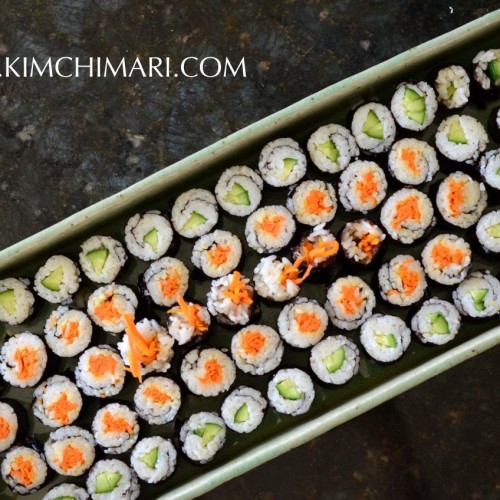
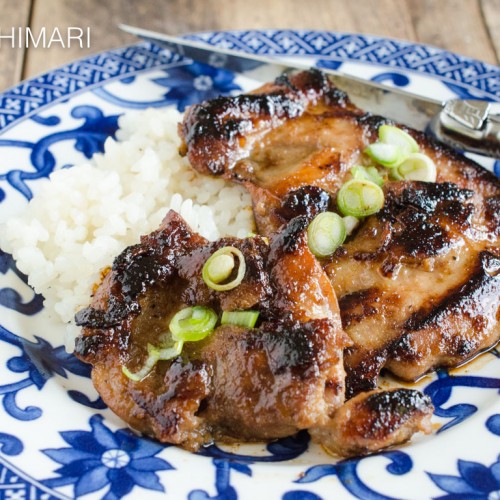
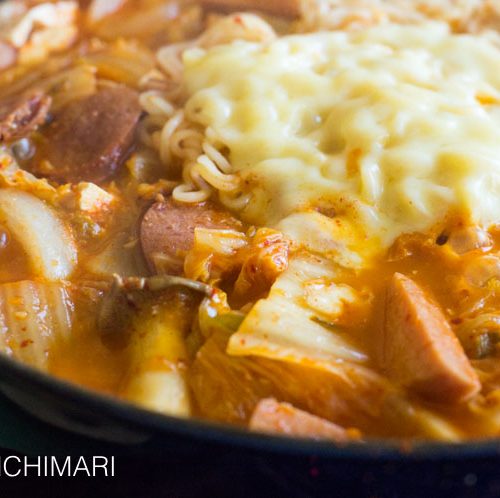
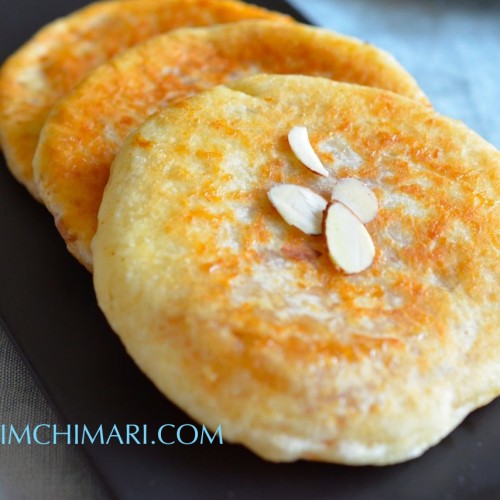






I have a family of 12, if I triple this recipe will it come out tasting the same? How might the cooking times change?
If you want to triple the recipe, you will definitely have to cook things a bit longer. Just cook until the tteok and mandu floats to the top. You may want to divide it into 2 pots or so if you want to make things go faster. Good luck!
I love this recipe. This is one of my favorites. Thanks your for sharing recipe
Aww.. thank you so much!! Happy (almost) New Year!
Can you use chuck beef instead of brisket for the soup base?
You can but texture won’t be the same and also the flavor will not be as good. If you are going to use chuck meat, I would recommend following my Ibstant Pot recipe. Cut into stew meat sizes and sauté then make broth.
Making this tonight for chuseok! thank you for the easy recipe!
I just discovered your website. It is fantastic. I love your photo illustrations as well as the insightful written discriptions. The only problem I faced is when I tried to print the page to take to my kitchen, I didn’t see a condensed recipe for easy printing. Is there one? I just don’t see it on the screen. I wonder if you would consider that for people like me who like to cook with hard copies, not from a computer screen.
Thanks a lot.
Y.A.
Hi Y.A. Thanks so much! You are right, there isn’t any separate format for easy printing yet but that’s definitely on my ‘to do’ list for 2012 so stay tuned! Happy New Year!
Hi Yuni,
I just noticed your comment as I was going through my old recipes. I hope you know that I have added a new recipe function where you can now print them and also change servings amount as you need. I’m sorry it took a long time but hopefully you are still reading my posts! Thanks!